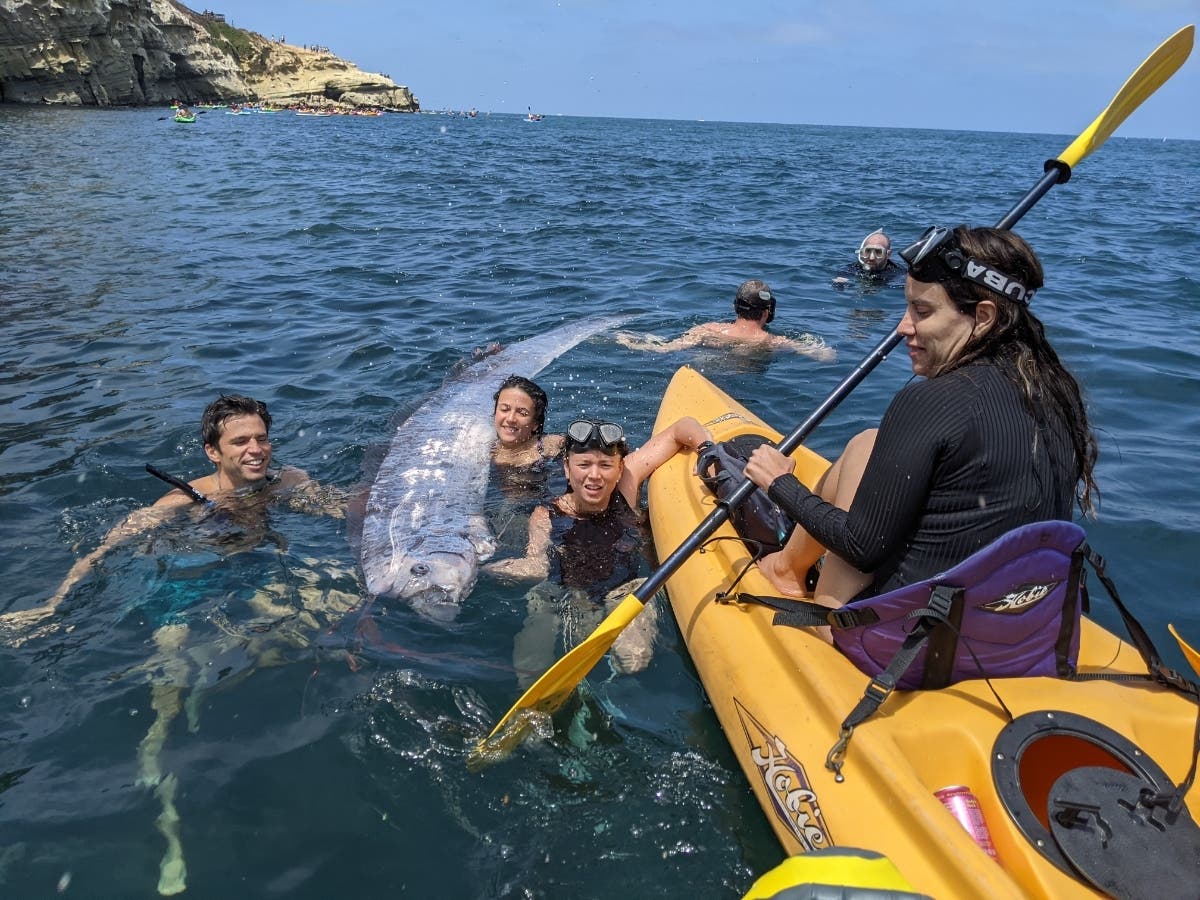Community Corner
Rare Deep-Sea 'Doomsday Fish' Found In Southern California
Although no correlation has been proven, oarfish have a mythical reputation as predictors of natural disasters such as earthquakes.
LA JOLLA, CA — A rarely seen deep-sea fish was found over the weekend in San Diego.
A team of science-minded kayakers and snorkelers found a dead oarfish, nicknamed the "doomsday fish," Saturday in the water at La Jolla Cove. The oarfish was turned over to scientists at Scripps Institution of Oceanography.
This marks only the 20th-recorded oarfish to have washed up in California since 1901, according to Ben Frable, senior collection manager of marine vertebrates at Scripps Institution of Oceanography.
Find out what's happening in San Diegowith free, real-time updates from Patch.
"We rarely interact with them, so each specimen can provide valuable information about these unique creatures and open ocean ecosystems in general," Frable told Patch.
.jpg)
Described as "sea serpents" in history, oarfish are considered the longest bony, non-shark fish and one of the largest fish in the open ocean, Frable said. Oarfish can grow to more than 30 feet, but this particular fish was 12 feet in length.
Find out what's happening in San Diegowith free, real-time updates from Patch.
The last oarfish washed ashore in 2015 in California, Frable said. Five washed up that year.
"At the time, folks thought it may be related to the strong El Niño/warm water we had in 2014-2016," he said. "However, we are not really experiencing similar conditions at the moment."
Although no correlation has been proven, oarfish have a mythical reputation as predictors of natural disasters such as earthquakes.
Oarfish live in deep ocean water at depths from 650 to 3,300 feet. The sight of them in shallow waters is an omen of earthquakes, according to Japanese legend. In 2011, 20 oarfish washed ashore in Japan in the months leading up to the deadly 9.1-magnitude earthquake.
Coincidentally, the mysterious creature was found days before a 4.4-magnitude earthquake struck Monday in Los Angeles and rattled much of Southern California.
Scientists will be able to further study this mysterious species as it will become part of the Marine Vertebrate Collection at Scripps, one of the largest collections of deep-sea fish in the world. The collection houses around 2 million preserved fish specimens in more than 120,000 lots, representing over 5,600 species of fishes.
"This is a resource for researchers that have questions about fishes they cannot answer from videos, live observations or current specimens," Frable said. "Having this specimen here will allow future generations to continue to ask questions and learn from this amazing fish."
Experts don't know why these fish are washing ashore in Southern California, but learn more from each specimen that is collected. On Friday, scientists from NOAA Southwest Fisheries Science Center and Scripps will perform a necropsy to see if they can determine a cause of death.
"We are interested in how they feed, how their gills function, how their bones form and how they are used, as well as their genetics, their role in open ocean food webs, their diet and how this specimen may have passed," Frable said. "There is truly a lot we can learn from this one individual."
Get more local news delivered straight to your inbox. Sign up for free Patch newsletters and alerts.
